Transcription factor PagMYB31 positively regulates cambium activity and negatively regulates xylem development in poplar
- PMID: 38339982
- PMCID: PMC11062435
- DOI: 10.1093/plcell/koae040
Transcription factor PagMYB31 positively regulates cambium activity and negatively regulates xylem development in poplar
Abstract
Wood formation involves consecutive developmental steps, including cell division of vascular cambium, xylem cell expansion, secondary cell wall (SCW) deposition, and programmed cell death. In this study, we identified PagMYB31 as a coordinator regulating these processes in Populus alba × Populus glandulosa and built a PagMYB31-mediated transcriptional regulatory network. PagMYB31 mutation caused fewer layers of cambial cells, larger fusiform initials, ray initials, vessels, fiber and ray cells, and enhanced xylem cell SCW thickening, showing that PagMYB31 positively regulates cambial cell proliferation and negatively regulates xylem cell expansion and SCW biosynthesis. PagMYB31 repressed xylem cell expansion and SCW thickening through directly inhibiting wall-modifying enzyme genes and the transcription factor genes that activate the whole SCW biosynthetic program, respectively. In cambium, PagMYB31 could promote cambial activity through TRACHEARY ELEMENT DIFFERENTIATION INHIBITORY FACTOR (TDIF)/PHLOEM INTERCALATED WITH XYLEM (PXY) signaling by directly regulating CLAVATA3/ESR-RELATED (CLE) genes, and it could also directly activate WUSCHEL HOMEOBOX RELATED4 (PagWOX4), forming a feedforward regulation. We also observed that PagMYB31 could either promote cell proliferation through the MYB31-MYB72-WOX4 module or inhibit cambial activity through the MYB31-MYB72-VASCULAR CAMBIUM-RELATED MADS2 (VCM2)/PIN-FORMED5 (PIN5) modules, suggesting its role in maintaining the homeostasis of vascular cambium. PagMYB31 could be a potential target to manipulate different developmental stages of wood formation.
© The Author(s) 2024. Published by Oxford University Press on behalf of American Society of Plant Biologists.
Conflict of interest statement
Conflict of interest statement. The authors declare no competing interests.
Figures

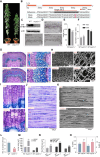
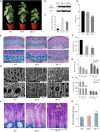
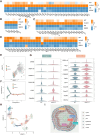

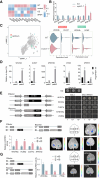

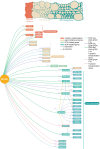
Similar articles
-
C2H2 zinc finger protein PagIDD15A regulates secondary wall thickening and lignin biosynthesis in poplar.Plant Sci. 2024 Sep;346:112159. doi: 10.1016/j.plantsci.2024.112159. Epub 2024 Jun 19. Plant Sci. 2024. PMID: 38901779
-
A miR156-SPL module controls shade-induced inhibition of vascular cambium activity through cytokinin pathway in poplar.Cell Rep. 2025 Jul 22;44(7):115963. doi: 10.1016/j.celrep.2025.115963. Epub 2025 Jul 10. Cell Rep. 2025. PMID: 40644300
-
The auxin-PLETHORA 5 module regulates wood fibre development in Populus tomentosa.Nat Plants. 2025 Mar;11(3):580-594. doi: 10.1038/s41477-025-01931-z. Epub 2025 Mar 19. Nat Plants. 2025. PMID: 40108378
-
The formation of wood and its control.Curr Opin Plant Biol. 2014 Feb;17:56-63. doi: 10.1016/j.pbi.2013.11.003. Epub 2013 Nov 30. Curr Opin Plant Biol. 2014. PMID: 24507495 Review.
-
CLE peptides in vascular development.J Integr Plant Biol. 2013 Apr;55(4):389-94. doi: 10.1111/jipb.12044. J Integr Plant Biol. 2013. PMID: 23473393 Review.
Cited by
-
Single-Cell Transcriptomics Applied in Plants.Cells. 2024 Sep 17;13(18):1561. doi: 10.3390/cells13181561. Cells. 2024. PMID: 39329745 Free PMC article. Review.
-
SC35-mediated bZIP49 splicing regulates K⁺ channel AKT1 for salt stress adaptation in poplar.Nat Commun. 2025 Aug 6;16(1):7266. doi: 10.1038/s41467-025-62448-9. Nat Commun. 2025. PMID: 40769973 Free PMC article.
-
PtrVINV2 is dispensable for cellulose synthesis but essential for salt tolerance in Populus trichocarpa Torr. and Gray.Plant Biotechnol J. 2025 Jun;23(6):1892-1908. doi: 10.1111/pbi.70022. Epub 2025 Feb 24. Plant Biotechnol J. 2025. PMID: 39992899 Free PMC article.
-
Genome-Wide Identification and Expression Profiling of Velvet Complex Transcription Factors in Populus alba × Populus glandulosa.Int J Mol Sci. 2024 Mar 31;25(7):3926. doi: 10.3390/ijms25073926. Int J Mol Sci. 2024. PMID: 38612736 Free PMC article.
-
Editorial: Contribution of phenylpropanoid metabolism to plant development and stress responses.Front Plant Sci. 2024 Aug 14;15:1456913. doi: 10.3389/fpls.2024.1456913. eCollection 2024. Front Plant Sci. 2024. PMID: 39206040 Free PMC article. No abstract available.
References
-
- Berthet S, Demont-Caulet N, Pollet B, Bidzinski P, Cézard L, Le Bris P, Borrega N, Hervé J, Blondet E, Balzergue S, et al. . Disruption of LACCASE4 and 17 results in tissue-specific alterations to lignification of Arabidopsis thaliana stems. Plant Cell. 2011:23(3):1124–1137. 10.1105/tpc.110.082792 - DOI - PMC - PubMed
Publication types
MeSH terms
Substances
Grants and funding
LinkOut - more resources
Full Text Sources
Research Materials
Miscellaneous

